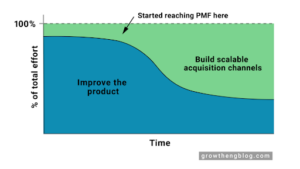Our businesses create more data than ever, and an enterprise data warehouse is the fastest way for business owners to understand what that data means
So you want to bring data analysis into your business – great! You might call it “business intelligence,” but that’s fine too. We just want you to know your numbers and learn more about your business, you can call it whatever you want.
The reality is that it’s hard to bring all the data about your business together in one place. Even though the apps you use to run it are accumulating more data than ever before, you only get to see the data inside that tool, not any of the other information that might change how you interpret that data. That’s the beauty of a data warehouse: it pulls all the important data together in one place to make it easier for you to compare, contrast, and make decisions based on what the numbers tell you.

It might not sound complicated, but it can get pretty tricky pretty fast. That’s why Mozart and our partners like Snowflake are working so hard to make all this data more legible to you – the decision maker. In a modern business, data is spread across lots of different software tools and databases. That’s where a good data warehouse comes in handy, and great analytics become essential.
What Is a Data Warehouse?
A data warehouse is a multidimensional database, which is designed to query data from multiple sources and to combine it in a way that makes it a lot easier to analyze. Data warehouses merge analytic and historical data, obtained from a range of sources. When your national organization uses a data warehouse, you can easily combine data from several locations around the country.
Data warehouses store years of data, allowing companies to track their performance over time or to make better decisions based on the impact of specific business strategies. Many of the data analyses that take place in such warehouses are time related. For example, you could use the data to determine the profit made on a particular product over a year or in the last month.
Queries often retrieve large amounts of data, so you’ll get a complete and accurate picture of what is happening in any aspect of your business. You can conduct both planned and ad hoc queries and the warehouse is optimized for high data throughput.
What’s a Data Warehouse For?
Whether you want to call it business intelligence or data science, a data warehouse is the provider that helps you bring it all together. In theory, it’s the server and software where you combine all of your data from various applications to centralize all the information about what’s going on in your company. In practice, it’s the central home where all your data lives so you can compare metrics from different sources and make intelligent and informed decisions about how to improve your business.
Modern generate massive amounts of data within various tools and databases and combining that data into a central location is powerful. You just need a central warehouse like Snowflake to do exactly that, and a platform like Mozart to make it easy to manage and analyze it.
All businesses need intelligence to improve their operations and remain current. Data warehouses are used to gather data about the business in one place, making analysis easier. They are used for this purpose in both commercial and non-profit organizations. Any entity can usually evaluate opportunities and risk, gaining a competitive advantage.
A commercial entity can apply a data warehouse to market segmentation, sales, financial management and other important aspects of its operations. It can use data from the warehouse to thoroughly analyze risk and manage that.
Data warehouses are used to save time, making data available to all users whenever they want to make a key decision. We like to call it “data democratization” – creating a culture in which no one has to wait to know what is happening in the organization or make informed decisions. Since data warehouses enhance data quality and consistency, each stakeholder can produce results that are consistent.
Data Warehouse Use Cases
Your data warehouse pulls all of that information into a centralized location where all the important data about your business is stored, and combined, without needing a whole team of people to dig into the numbers. That’s what business intelligence is for. Even if you don’t want to hire a whole team to handle it, a data warehouse and BI app will give your data analyst an awful lot to work with.
For instance, let’s say you’re running an ecommerce store. The pandemic boom has been good for your order volume, but you’re not sure where to go next, and you’re struggling to understand what’s exactly going on with the business in a period of rapid change. Maybe your data is spread across Shopify, Facebook, your manufacturers, your warehouse, your third party logistics experts, plus USPS, UPS, and FedEx… All these platforms pumping out data at once, what a mess!
For another example, a delivery business we worked on before Mozart generated tons of data for us to process, but it could be overwhelming to handle. Inventory, popular products, driver availability, and even the time it took to deliver to certain areas can make the difference between a glowing review and an unhappy customer. Plus, we were working in a business that was going to live or die on the back of repeat orders, so it was of the utmost importance to make sure that customers had a great first impression of the store, and the delivery service, every time. Those metrics were all relevant to the average value of an order, and our company’s profitability, but existing technology didn’t make it easy to run those numbers, much less predict the value of incoming orders.
Using a great data warehouse took all of those complications, and all of that data, and made it legible to our team. We needed less sophisticated (and expensive) talent to combine and interpret that data, and insights were more readily available to our executive leaders.
While it’s not a big deal for a hot startup to build up a whole data team to sit like a dragon on a pile of golden data, it’s not a practical idea for many businesses, and it’s definitely not cheap. Fortunately, an awful lot of those man hours can be replaced now with smart software.
Why You Want to Implement a Data Warehouse
The price of data warehouses is falling, and it’s becoming increasingly easy for businesses of all sizes to utilize them. Being able to house the data about what’s going on in your business in one place is necessary, and the ability to compare and contrast metrics is essential. The ability to run simple inquiries on your most important numbers will be a big leg up on your competition as well, and will probably be necessary going forward.
Businesses will continue to generate and store more and more data every year, which will provide opportunities for you to gain an edge as you analyze it in your company. However, the more data we generate, the more difficult it becomes to make sense of it all, and that’s why a data warehouse has become a critical tool.
If you’re not sure how to make sense of your business data without building a large data team, take us up on our free trial or schedule a demo. Mozart Data can help you connect to your most important data sources, combine the data into a central data warehouse, and get your reports up and running in under an hour. They’ll help your business intelligence teams find valuable insights about your business in no time, without the need for a traditional data engineering team (or stressing out the team you have!)


